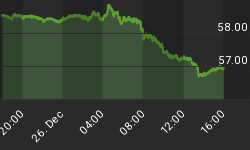According to the Bureau of Labor Statistics (BLS), there were 151k, 000 net new jobs created in the month of January, and the unemployment rate fell to 4.9%. The continuing increase in new job creation and removal of slack in the labor market is causing the Phillips-curve-obsessed Fed to maintain a tightening stance on monetary policy.
However, not only is Ms. Yellen and company wrong about the progenitor of inflation, the Fed is also obsessing about job growth that isn't real. According to that same BLS, in December of 2015 thru January 2016 the economy actually lost 2,999,000 jobs, or 2.08% of the workforce. The Labor Department arrived at a positive employment number because the BLS seasonally adjusts the data--my friend David Stockman had more to say about his in his excellent blog.
On a seasonally adjusted basis the U.S. economy created 413k, 000 jobs during that timeframe. Of course, it makes sense to adjust the jobs data for hiring and firing around the Christmas season. But it makes much more sense to look at the data year over year for a more accurate assessment of the labor market. During December 2014 thru January 2015 the economy shed 2,820,000, or 1.99%.
Therefore, the economy not only lost 179,000 more jobs this year during the post-Holiday layoff season than it did the year prior, but it also suffered a greater percentage of job losses than it did during the comparative time frame.
What makes this layoff picture even worse is the number of retail corporations that are in the process of closing their brick and mortar presence. For example, Walmart is closing 154 stores in the United States and is laying off 10,000 employees. There are also about 6,000 other major retailers that are in the process of shuttering up their stores. This means the part-time, retail-job growth economy, which has been the staple of hiring since the recovery began, will be shedding more jobs at an increased rate going forward.
And please don't believe today's 4.9% U-3 unemployment is comparable with times past. The last time the unemployment rate was 4.9% was February of 2008. At that time the Labor Force Participation Rate (LPR) was 66 and the Employment to Population Ratio (EPR) was 62.8. Today's low unemployment rate comes with a LPR of only 62.7 and an EPR of just 59.6.
But the major point here is that a low unemployment rate can never lead to inflation. And this is especially true when all of that job growth is the seasonally adjusted phantom variety. The Keynesian squatters who inhabit the FOMC believe dogmatically that inflation is the result of too many people being employed. However, what they fail to understand it that inflation is all about a loss of confidence in the purchasing power of a currency. That can never be the result of a low unemployment rate.
Nevertheless, Yellen and her Philips-curve junkies indicated clearly in the Semiannual Monetary Policy Report to Congress on February 10th that the FOMC will lean toward hiking interest rates until the U-3 unemployment rate begins to rise. This means the Fed will be threatening to continue tightening monetary policy into an incipient global deflationary depression. But Yellen will not be able to increase the Fed Funds rate above the 75bps level before the bottom completely falls out on the global economy. Perhaps she will be pretend the world isn't collapsing around her for a little while longer. But we all know better and it won't be long before the Fed joins the rest of the developed world's central bankers into perpetual QE and NIRP.
Michael Pento produces the weekly podcast "The Mid-week Reality Check", is the President and Founder of Pento Portfolio Strategies and Author of the book "The Coming Bond Market Collapse."
















